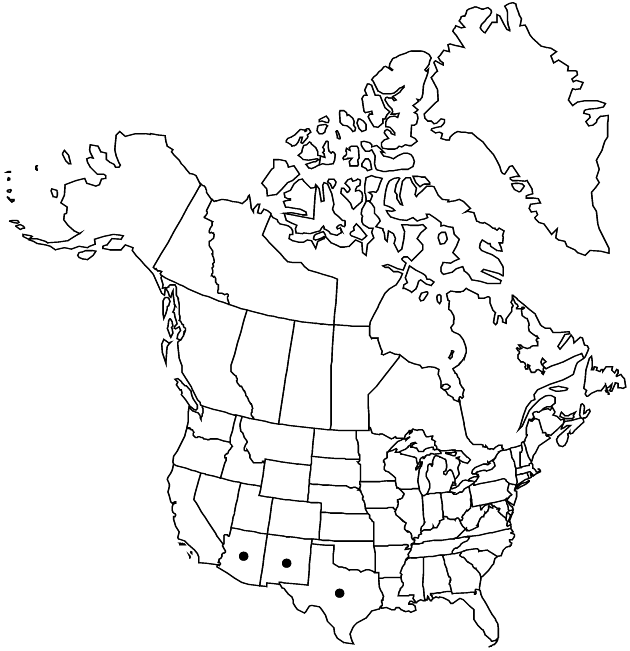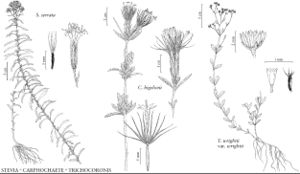Difference between revisions of "Carphochaete bigelovii"
Smithsonian Contr. Knowl. 3(5): 89. 1852.
Common names: Bristlehead
Treatment appears in FNA Volume 21. Treatment on page 487.
FNA>Volume Importer |
FNA>Volume Importer |
||
| Line 46: | Line 46: | ||
|publication year=1852 | |publication year=1852 | ||
|special status= | |special status= | ||
| − | |source xml=https://jpend@bitbucket.org/aafc-mbb/fna-data-curation.git/src/ | + | |source xml=https://jpend@bitbucket.org/aafc-mbb/fna-data-curation.git/src/f50eec43f223ca0e34566be0b046453a0960e173/coarse_grained_fna_xml/V19-20-21/V21_1226.xml |
|tribe=Asteraceae tribe Eupatorieae | |tribe=Asteraceae tribe Eupatorieae | ||
|genus=Carphochaete | |genus=Carphochaete | ||
Revision as of 21:33, 16 December 2019
Stems usually stiff, erect. Leaves often fascicled on older growth; blades 5–35 mm. Heads terminal (± pedunculate) or in leaf axils (sessile). Involucres 12–20 mm. Phyllaries: gland-dotted, sometimes puberulent as well, margins narrowly hyaline, apices acute. Corollas 15–20 mm, throats usually purplish, lobes creamy white. Cypselae yellow-green to golden brown, 11–14 mm; pappus scales mostly brownish to purplish with colorless, hyaline margins, aristae of the longer 1–3+ mm, scabrous. 2n = 22.
Phenology: Flowering Jan–Jun.
Habitat: Sandy soils, rock outcrops in grasslands, chaparral, pine-oak woodlands
Elevation: 900–2200 m
Distribution

Ariz., N.Mex., Tex., Mexico (Chihuahua, Coahuila, Sonora).
Discussion
Selected References
None.
Lower Taxa
None.
